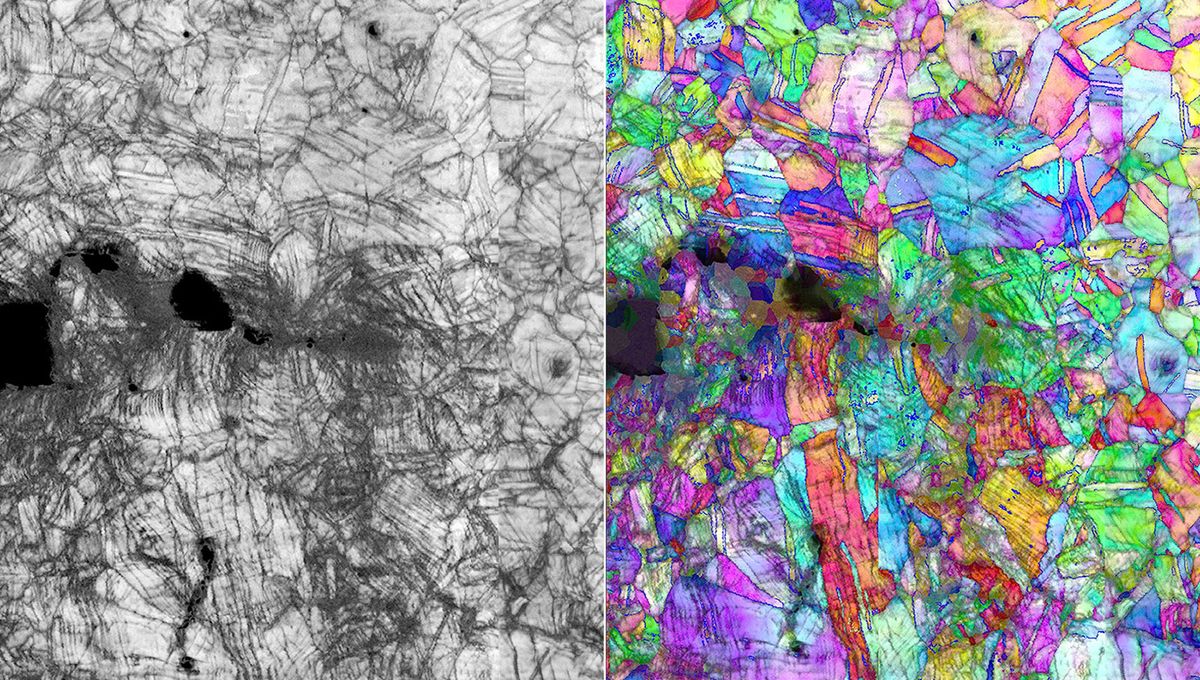
A metallic alloy of chromium, cobalt, and nickel (CrCoNi) has amazed scientists, thanks to its properties. The material is impressively strong, meaning it resists permanent deformation, and at the same time remains extremely ductile, meaning it is highly malleable. Together, these two properties form the measurement of toughness, and CrCoNi is by far the toughest material on Earth.
CrCoNi is part of the high entropy alloy (HEA) family, materials in which the proportions of elements are roughly the same. These HEAs tend to have great toughness, but they have been difficult to test in the most extreme conditions. Technology has matured enough now to do that, and researchers at Lawrence Berkeley National Laboratory (Berkeley Lab) and Oak Ridge National Laboratory (ORNL), discovered that CrCoNi surprisingly gets tougher the colder it gets.
“When you design structural materials, you want them to be strong but also ductile and resistant to fracture,” project co-lead Easo George, from ORNL and the University of Tennessee, said in a statement. “Typically, it’s a compromise between these properties. But this material is both, and instead of becoming brittle at low temperatures, it gets tougher.”
The team first started working on CrCoNi and another alloy with extra manganese and iron (CrMnFeCoNi) almost a decade ago. They were able to push the samples to liquid nitrogen temperatures, which revealed that as materials go they were pretty great. But it took the team years to be able to test them under more extreme conditions. CrMnFeCoNi did well, but CrCoNi was exceptional.
“The toughness of this material near liquid helium temperatures (20 [degrees] Kelvin, -424 [degrees] Fahrenheit] is as high as 500 megapascals square root meters. In the same units, the toughness of a piece of silicon is one, the aluminum airframe in passenger airplanes is about 35, and the toughness of some of the best steels is around 100. So, 500, it’s a staggering number,” added research co-leader Robert Ritchie, a senior faculty scientist in Berkeley Lab’s Materials Sciences Division and the Chua Professor of Engineering at the University of California, Berkeley.
The material exhibits behaviors under deformation that create a “magical sequence” of interactions that provide first malleability and then strength. At first, its structure is very simple, just grains, but once deformed it evolves into something very complicated that makes it resistant to fractures.
The material is now being developed for different applications, but due to the cost to create it, researchers currently consider it a good candidate for extreme environments such as deep space.
The details of the discovery are published in the journal Science.
Source Link: Meet The Latest, Toughest Material On Earth